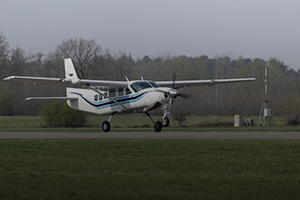Hydrogen-Powered Airplane

As more and more companies step up to the plate to address the need for zero-emissions aircraft, several approaches have been proposed. Most rely on batteries as either their primary source of power or as secondary backup to provide short bursts of power; for example, during takeoff. But at least one startup has developed a system based exclusively on hydrogen fuel cells.
It’s been estimated that aviation accounts for more than 12 percent of global emissions – that’s more than 900 million metric tons of carbon dioxide every year. Furthermore, because these emissions are released at higher altitudes, their impact is two to four times greater than those released on the ground. With four times the energy density of even the best batteries available today, hydrogen is an obvious alternative for short flights using smaller planes. The current powertrain design has a range of 300 to 500 miles and operates at about half the cost of a typical fossil fuel engine. Designed for carrying 10 to 20 passengers, the smaller planes can bypass large, congested hubs; make better use of underutilized regional airports; and effectively reduce the total number of miles that passengers need to travel.
The proposed system uses compressed hydrogen stored in carbon fiber cylinders, which adds weight and limits the usable range. And while a shift to liquid hydrogen for use in larger aircraft is feasible, it will require additional safety testing. But nearly half of flights globally range 500 miles or less, which is well within the limits of the current technology.
For information: ZeroAvia, Inc., 90 Skylane Drive, Hollister, CA 95023; Web site: https://www.zeroavia.com/